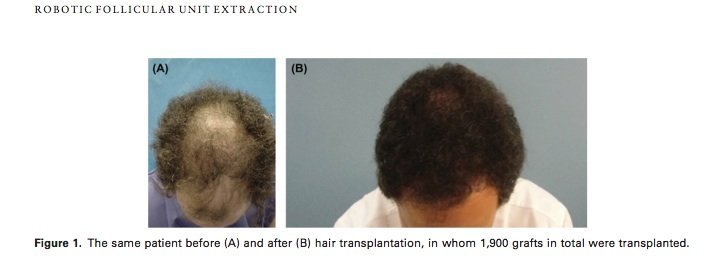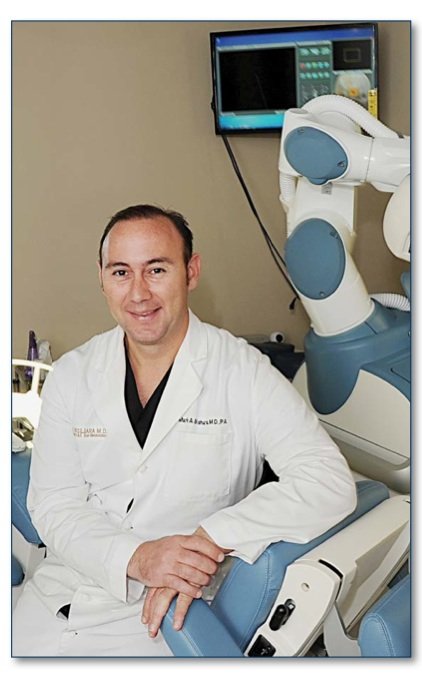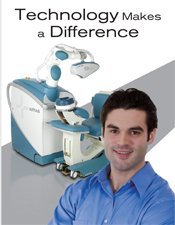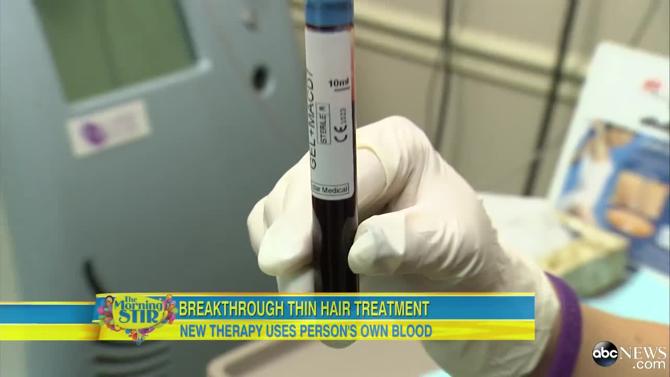Marc R. Avram, MD,* and Shannon A. Watkins, MD†
BACKGROUND In recent years, there has been a shift toward minimally invasive procedures. In hair trans- plantation surgery, this trend has manifested with the emergence of follicular unit extraction (FUE). Recently, a robot has been introduced for FUE procedures.
OBJECTIVE- To determine the transection rate of a robotic FUE device. In the attached article, the authors discuss the procedure, technical requirements, optimal candidates, advantages, and disadvantages of robotic FUE compared with the standard ellipse.
RESULTS- Optimal candidates for robotic FUE are those with dark hair color who can sit for 45 to 120 minutes and are willing to shave a large area for donor harvesting. The main advantages of robotic FUE compared with the standard ellipse are its minimally invasive nature and the lack of a linear scar.
CONCLUSION- The robot is a new and innovative method for FUE hair transplantation of which hair transplant surgeons should be aware.
Over the past several years, the focus of discussion in the field has begun to shift away from the size of the graft used to transplant hair toward the harvesting method used to obtain the donor grafts. For decades, 2 to 4 mm punch trephines were used to obtain donor hair from the posterior scalp. Typically, the grafts were removed and wounds were allowed to heal by secondary intention. This resulted in widespread “hon- eycomb” scarring (Figure 2). In 1994, the concept of elliptical donor harvesting, also known as strip har- vesting, was introduced and has been the standard method for obtaining donor grafts.3 It is based on the same dermatologic surgery techniques used in removing nevi, skin carcinomas, and cysts. It allows efficient harvesting of hundreds to thousands of fol- licular groupings. As with any cutaneous excision, there is a scar created from removing the donor ellipse. For the majority of patients, this is neither a medical nor a cosmetic issue. For a minority of patients, medical and cosmetic challenges may arise. A small percentage of patients will develop hyper- trophic or broad scars. Others feel limited in the hair styling options because of the donor scar. For these
The concept of follicular unit extraction (FUE) was introduced in the early 21st century and refined over the past decade.4–6 Follicular unit extraction used the same concept of using a steel trephine to harvest donor hair, but instead of being 2 to 4 mm in diameter as was used in the past, the FUE punches range from 0.8 mm to 1.2 mm. This technique is a natural extension of the concept of follicular unit hair transplantation—the utilization of individual follicular groupings in the recipient and donor sites.
Challenges of this technique include the following: increased risk of transection of hair follicles, operator fatigue when harvesting hundreds of follicular groupings, and appropriate spacing of harvested grafts to yield the maximum amount of donor hair without creating the appearance of a depleted donor density.6 Throughout the posterior scalp, the angle of hair growth varies, which presents a challenge to surgeons. Magnification and excellent lighting reduce but do not eliminate the risk of transecting follicles. Compounding this challenge is the need to remove dozens to many hundreds of follicular groupings for each case. Harvesting larger numbers of grafts can result in increased operator fatigue and a higher rate of transected hair follicles. Some experienced sur- geons are able to harvest large numbers of follicular groupings with minimal transections, but others are unable to do so.
Robotic Follicular Unit Extraction

Technical Aspect








